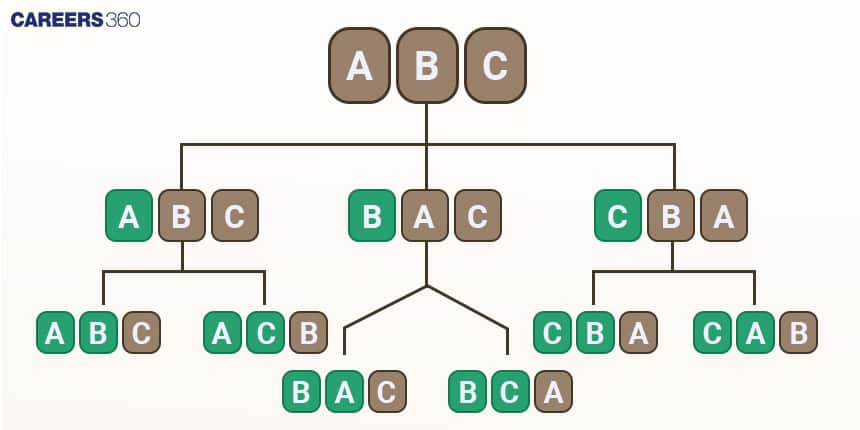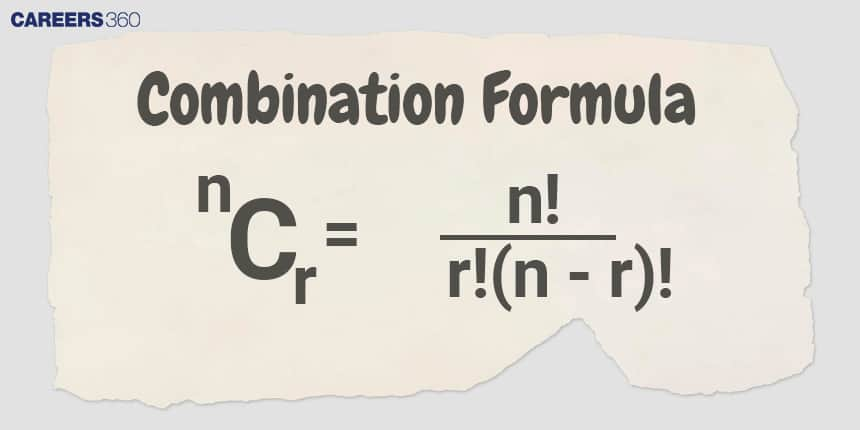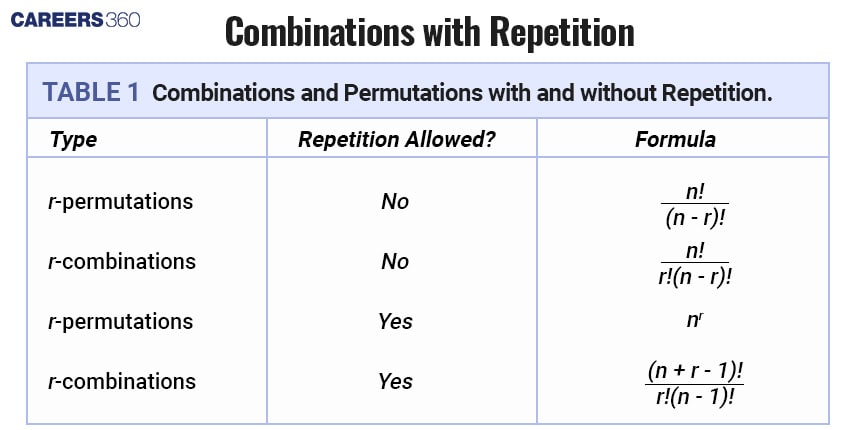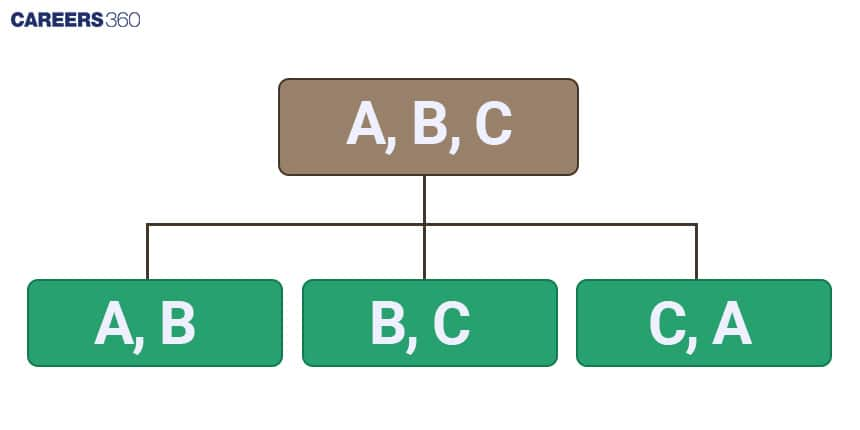Permutation and Combinations - Topics, Formula, Books, FAQs
Consider a rack of books of different genres which need to be organized. How many different ways can we combine and arrange the books of different genres? Which two sets of books of different genres can be placed next to each other? To answer this question, you'll start listing all the possible ways to combine and arrange the books which will be tedious because the number of possible arrangements may be large. To find it easier, here comes the application of permutations and combinations. To find the total number of different ways to arrange the books we use permutations while to know the number of selections of genres, we use combinations.
JEE Main: Study Materials | High Scoring Topics | Preparation Guide
JEE Main: Syllabus | Sample Papers | Mock Tests | PYQs
- What is factorial?
- What are the Fundamental Principles of Counting?
- What is Permutation?
- Types of Permutations
- What is the Combination?
- Relation between Permutation and Combination
- Difference between Permutation and Combination
- Permutation and Combination Questions
This article is about the concept permutation and combinations class 11. Here, in this Chapter, you will study some basic counting techniques which will enable you to answer this question without actually listing 3-digit arrangements. In fact, these techniques will be useful in determining the number of different ways of arranging and selecting objects without actually listing them.
'Permutations and Combinations' is concerned with determining the number of different ways of arranging and selecting objects out of a given number of objects, without actually listing them. Permutations and Combinations are generally referred to as “PnC”. This chapter is all about logic and “counting”. PnC tests your ability to observe the pattern, your mathematical reasoning, and your creativity.
From the exam point of view, PnC is one of the important chapters. Concepts of Permutation and combinations are mostly used while solving problems from probability. The problems of probability are no longer as simple as they used to be in elementary standards. However, if you have a command of Permutations and Combinations, the chapter probability will be a piece of cake for you.
Prepare Online for JEE Main/NEET
Crack JEE 2025 with JEE/NEET Online Preparation Program
What is factorial?
A factorial is the product of all positive integers up to a given number.
It is denoted by
It is calculated as follows.
Note that:
What is the meaning of
It is used in various mathematical and real-world contexts like:
Permutations and combinations
In calculations involving probability distributions.
Algebra and calculus
Computer science algorithms involving combinatorial logic.
What are the Fundamental Principles of Counting?
Counting principles are foundational rules used to count the number of ways certain arrangements can occur.
It has two types.
Principle of Addition
Principle of Multiplication
Principle of Addition(OR rule)
If work
Principle of Multiplication(AND rule)
If a certain work
What is Permutation?
A permutation is an arrangement of all or part of a set of objects, with regard to the order of the arrangement. Arranging
For example, suppose we have a set of three letters:

What is the formula for Permutation?
Arranging

So the number of ways of arranging
Where
So, the number of ways arranging n different objects taken all at a time
Types of Permutations
There are different types of permutations.
Permutation of
Repetition, where repetition is allowed
Permutation when the objects are not distinct (Permutation of multisets)
Permutation of
In this case, each object is used only once in the arrangement.
The formula to find the number of permutations of
Where
Permutation of
When repetition is allowed, each object can be used more than once in the arrangement. The formula to find the number of permutations when repetition is allowed is given by:
Where
And
Permutation when the objects are not distinct (Permutation of multisets)
When some objects are identical, the formula to find the number of distinct permutations is adjusted to account for the repetitions. The formula is given by:
p(n; n1, n2, n3,......., nk) =
Where n is the number of total objects, n1, n2, n3,......., nk are frequencies of different objects.
What is Circular Permutation?
When n objects are to be arranged circularly, then the formula to find the number of distinct permutations is given by (n-1)!.
What is the Combination?
A combination is a selection of items from a larger pool, where the order of the items does not matter. In other words, it is a way of selecting items where the arrangement or sequence of the selection is not considered.
Suppose we want to select two objects from three distinct objects a, b and c. This can be stated as a number of combinations of four different objects taken two at a time.
Here we have three different combinations ab, bc, ca, bc. In other words, we can say that there are three ways in which we can select two objects from three distinct objects.
Combination Formula

We can generalize this concept for
Where
When is the Combination to be used?
Combinations are used when the order of selection does not matter. Here are some examples of when combinations are appropriate:
Lottery Selection Method: In the Lottery selection method, we use the combination method. Order does not matter in selecting lotteries to choose prize winners.
Forming Committees: When forming a committee from a group of people, the order in which members are chosen does not matter.
Choosing Subsets: When choosing a subset of items from a larger set, where the order in which items are chosen is irrelevant.
Hand of Cards: When selecting a hand of cards from a deck, the order of the cards in the hand does not matter.
Relation between Permutation and Combination
Theorem 1:
Corresponding to each combination of
Proof:
We have to prove that
Taking the left side of the equation:
Taking the right side of the equation
Hence,
Theorem 2:
Proof:
We have to prove that
Taking the left side of the equation, we get,
=
=
=
=
=
=
=
=
=
=
Hence, proved.
Difference between Permutation and Combination
Permutation | Combination |
Permutation refers to the different possible arrangements of a given number of items taken some or all at a time. | A combination is a selection of items from a larger pool, where the order of the items does not matter. |
Order of arrangement is important. | Order of arrangement is not important. |
Permutations are for lists. | Combinations are for groups. |
The number of permutations of “ Where | Where |
Important Points

Permutation and Combination Questions
Question 1: A bookstore has
Solution
For the mystery novels, you have
For the romance novels, you have 3 choices, and you want to choose 2.
For the fantasy novels, you have
So, there are
Hence, the correct answer is
Question 2: You have a collection of
Solution
To find the number of different combinations of
So, you can create
Hence, the correct answer is
Question 3: In how many different ways can the letters of the word '
Solution
To find the number of different ways the letters of the word '
Now, you have the letters "V," P, H, N, M, N, and L. These can be arranged in
However, the letter '
But the vowels (2 Es, O and A) can be permuted themselves.
Hence, the correct answer is 30,240 ways.
Example 4: If
Solution: To solve the equation
Let's start by simplifying the equation:
Rewriting the equation using the permutation formula:
Simplifying further:
Next, we can simplify the factorials:
Cancelling out common terms:
Simplifying:
Now, we can solve for
Since we have simplified the equation to the form
, we can set
Therefore,
Hence, the answer is
Example 5: The sum of the series
Solution: We can write
Thus,
Hence, the answer is
Example 6: The remainder when
Solution: For
Thus, when x is divided by
the remainder is
Hence, the answer is
Example 7: In a lottery game, you need to select
Solution: In this case,
Therefore,
Hence, the answer is
List of Topics According to NCERT/JEE MAIN
How to Prepare Permutation and Combination?
Follow these tips to prepare the chapter permutation and combination created by the subject matter experts:
Understand the use of
When you first prepare for permutation and combination, the two-term you’ll learn are
Practice Different types of Questions:-
In Permutation and Combination, you can form an infinite number and different type of questions and still cannot be confident that you will be able to solve all questions of this topic. So to be able to solve the maximum number of questions you need to practice a lot, that’s the key. Solve the variety of questions and first try to understand the question. Think about the concept that can be used to solve this question. And don’t jump directly to the solution after just reading the question. In JEE Main questions from this topic won’t be too exaggerated and will test your basics. Make sure you practice the ball-box and other related problems, as many questions previously asked previously in JEE Main revolve around this concept.
NCERT Notes Subject Wise Link:
Best Books For Preparation of Permutation and Combination
First, finish all the concept, example and question given in NCERT Maths Book. You must be thorough with the theory of NCERT. Then you can refer to the book Cengage Mathematics Algebra. PnC is explained very well in this book and there are ample amount of questions with crystal clear concepts. You can also refer to the book Arihant Algebra by SK Goyal or RD Sharma. But again the choice of reference book depends on person to person, find the book that best suits you the best depending on how well you are clear with the concepts and the difficulty of the questions you require.
NCERT Solutions Subject-wise link:
Frequently Asked Questions (FAQs)
A permutation is an arrangement in a definite order of a number of objects taken some or all at a time.
Permutation is the arrangement of set of items in a specific order while combination is the selection of set of items.
Combinations can be represented in terms of permutation. The formula for permutation is
In permutation,
The formula for
Also Read
13 Feb'25 06:36 PM
13 Feb'25 06:33 PM
13 Feb'25 06:31 PM
13 Feb'25 06:30 PM
13 Feb'25 06:26 PM
13 Feb'25 06:10 PM
13 Feb'25 05:04 PM
13 Feb'25 04:53 PM
13 Feb'25 04:47 PM
20 Dec'24 02:21 AM


